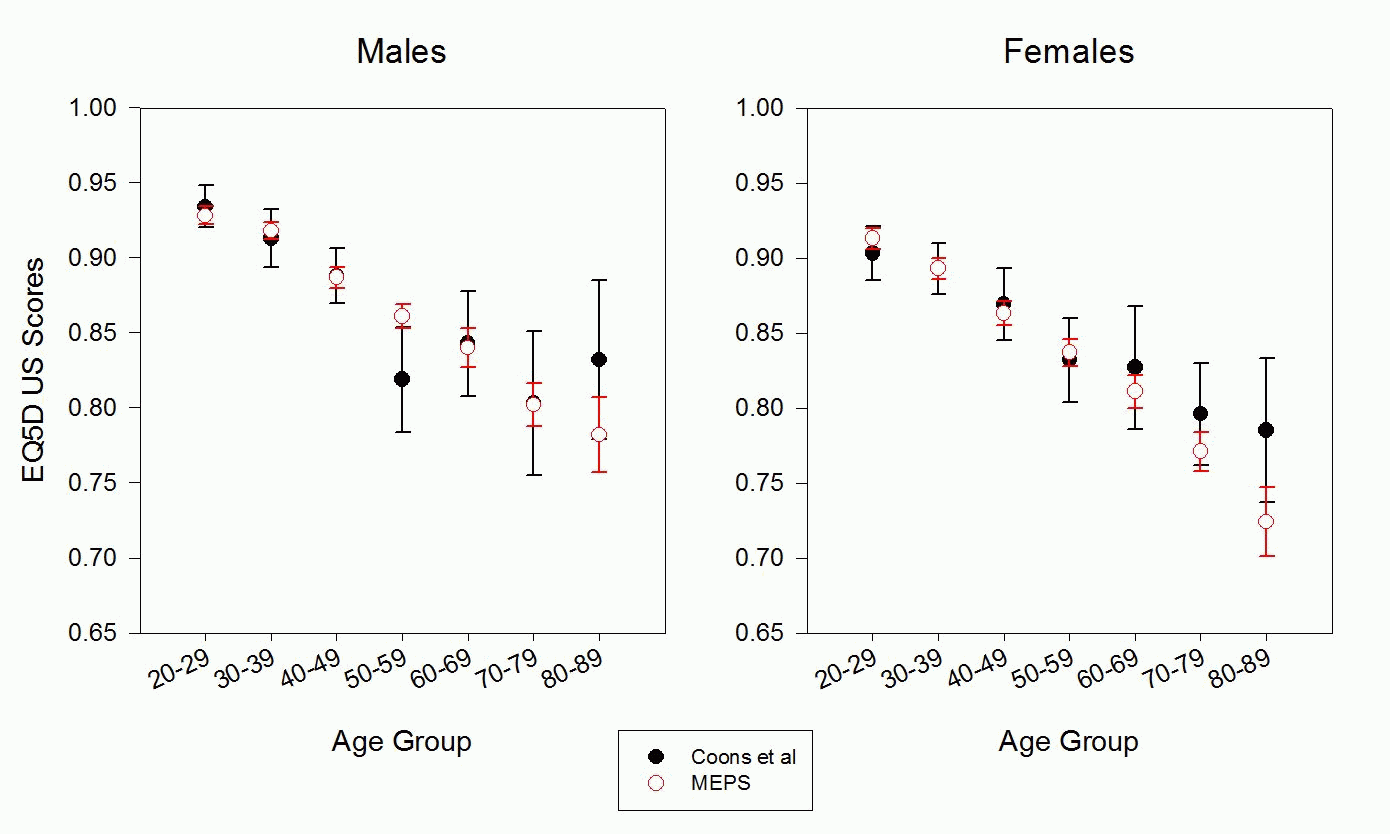and Janel Hanmer. University of Wisconsin, Madison, WI
Purpose: There are now multiple nationally representative surveys that include Health Related Quality of Life (HRQoL) measures. We examine if two of these surveys give equivalent estimates of sex and age stratified HRQoL means. Methods: We compared estimates from the US Valuation of the EuroQol EQ-5D Health States Study (Coons et al), and the 2001 Medical Expenditures Panel Survey (MEPS). The EQ-5D was asked directly in each survey. The Health Utilities Index Mark 3 (HUI3) was asked directly in Coons et al. We estimated HUI3 scores from the MEPS data using two published algorithms (Franks et al and Sengupta et al). We estimated nationally representative means by sex and age. Results: We used all completed responses from participants age 20 to 89. Of 3536 Coons et al participants, 3482 completed the EQ-5D and 3536 completed the HUI3. Of 22,523 MEPS participants, 19,629 completed the EQ-5D and 19,853 completed the SF-12. The figure illustrates means and 95% confidence intervals for the EQ-5D, scored with the US valuation weights. The confidence intervals overlapped for all age groups in both sexes. In general, females report lower HRQoL scores than males for any given age group. The MEPS data show decreasing point estimates with increasing age. The Coons et al data has a less consistent age trend in males. Directly elicited HUI3 scores from the Coons et al data show a similar pattern as the EQ-5D scores. Franks et al HUI3 point estimates from MEPS were lower than the Coons et al confidence intervals in younger age groups, but comfortably within the intervals at older age groups for both sexes. Sengupta et al HUI3 point estimates from MEPS were significantly higher than the Coons et al confidence intervals in all groups, with many point estimates above 1.0. Conclusions: In general, directly assessed EQ-5D estimated means were consistent across the two surveys. Users of imputed scores should be wary.


